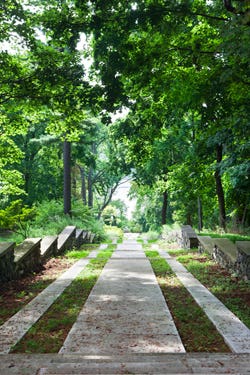
Features
Untermyer Gardens: Presiding Over the Palisades

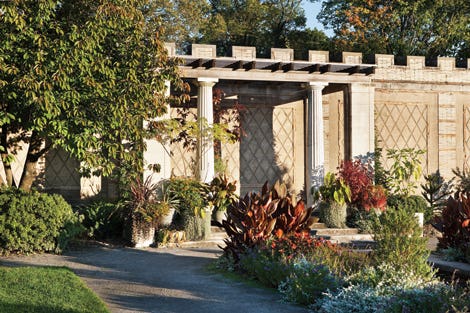
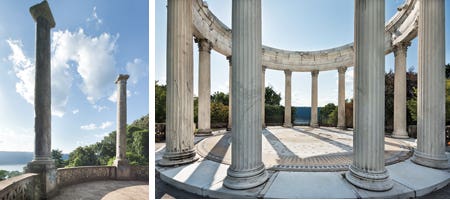
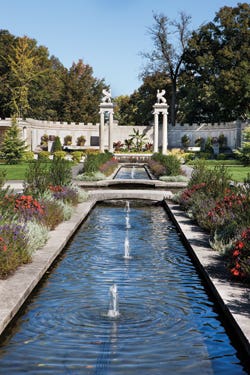
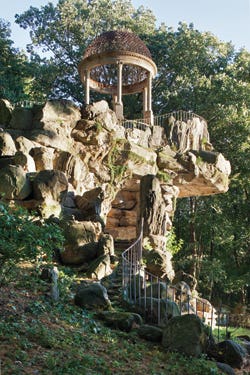
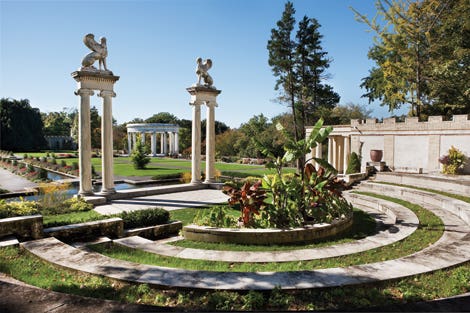
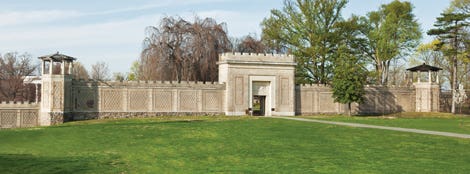
Stephen Byrns has founded the Untermyer Gardens Conservancy with the idea of bringing the forgotten garden back to life.
By Nancy A. Ruhling
In the City of Yonkers, NY, there grows what has come to be called "America's Greatest Forgotten Garden." Untermyer Park and Gardens, a paradise presiding over the Palisades, has been so hidden by time that up until recently even many locals didn't know of its existence, much less its rich history and deep-rooted reputation. But New York City architect Stephen Byrns did. Byrns, AIA, and a principal in BKSK Architects, had stumbled upon the Untermyer when he lived in Yonkers in the 1990s and knew that in its day, it had been heralded from coast to coast as "America's Most Spectacular Garden."
Byrns, a New York City Landmarks commissioner from 2004 to 2010, has a deep interest not only in architecture but also in horticulture, and he decided he wanted to bring the Untermyer back to life. It was a shame, he says, that it "had all but disappeared from the public consciousness."
Two years ago, he formed the nonprofit Untermyer Gardens Conservancy, which has set about rehabilitating the National Register of Historic Places site with the cooperation of the Yonkers Parks Department and input from Marco Polo Stufano, founding director of horticulture at Wave Hill, the renowned New York City public garden in Riverdale, the Bronx. "Our nonprofit is based on the idea of the Central Park Conservancy, which is a public/private enterprise," Byrns says.
Gardens, by their very nature, are designed to mature through the decades.
"You can't freeze a garden in time like you can architecture," says Timothy Tilghman, the former Wave Hill gardener who has been working full-time at Untermyer since June 2011. "Samuel Untermyer, who commissioned these gardens, was also an art collector and music lover, but he said that his favorite medium was plants because they are dynamic. And he proved his point by being an aggressive gardener."
Byrns' group is aiming to bring Untermyer's adventurous horticulturist spirit back to the gardens. "We're trying to relate to his rhythm with world-class design," Byrns says, adding that "we cannot afford to do everything he did such as his large-scale seasonal plantings of 50,000 tulips and 56,000 pansies. And we don't have the budget for 60 gardeners and 60 greenhouses."
Untermyer, the first lawyer to earn a $1-million fee in a single case, was an amateur horticulturist par excellence. He purchased the property and its granite mansion, Greystone, in 1899 for the then-enormous sum of $171,500. Eventually, he expanded the land to 150 acres. Around 1915, he commissioned Beaux-Arts architect William Welles Bosworth, who designed the gardens at Kykuit, the Rockefeller estate in Sleepy Hollow, NY, and who restored Versailles, to create "the finest garden in the world."
With this auspicious mandate, Bosworth created a spectacular design that included a Walled Persian Garden, inspired by the Garden of Eden, that features a rotunda of Corinthian columns dubbed The Temple of the Sky; The Vista, the grand staircase that was modeled after that at the Villa D'Este, a Renaissance garden on Italy's Lake Como; six Color Gardens, each planted in a single hue; the Vista Overlook, which is flanked by a pair of monolithic ancient Roman cipollino marble columns; a woodland trail; The Temple of Love, complete with waterfalls and rock outcroppings; and two rock gardens.
So proud was Untermyer of the plantings that in the 1920s and 1930s, he opened his gardens to the public one day a week. It became a popular destination: On a single day in September 1939, 30,000 people took the tour.
Untermyer wanted to share his gardens with the public in perpetuity, but when he died in 1940, neither New York State nor Westchester County could afford to accept his beautiful, blooming bequest. For six years, the estate paid for its meticulous upkeep, and in 1946, some 16 acres were given to the city. The mansion, which had been built in 1862, was razed soon afterward. In the 1990s, 27 acres were added, and it is these 43 that Byrns wants to return to their original glory. It is a job, he says, that could take a lifetime – and $10 million. So far, the conservancy has raised nearly $500,000, enough to hire a second gardener and to start work on the Walled Garden, the finest Persian garden in the Western Hemisphere.
Horticulturist Tilghman says the vast scope of the project is what makes it exciting.
"For the Walled Persian Garden, we chose to re-create, as much as the budget allows, the year 1924," he says. "We want to build on its history and stories."
The entrance, guarded by a stone carved with the image of Artemis, the Greek goddess of the hunt, leads to the serenest of spaces. Byrns goes inside and sits on a stone bench shaded by a pair of weeping beeches, whose cascading branches look like waterfalls. In this Eden, they are the Tree of Life and the Tree of the Knowledge of Good and Evil.
Every detail of this garden is imbued with deep meaning. The criss-cross canals, with their bubbling fountains, symbolize the four ancient rivers. The four quadrants of the garden represent the earth, air, fire and water or the four directions of the compass. And the four corner towers, which Byrns calls "summer houses," reference Indian traditions. "Almost everything you see here, except the two beech trees and some shrubs, is newly planted," he says. "It has been a heroic, monumental effort." He points out the Atlas cedar, whose blue branches raise fist-like cones to the sky. The native of Algeria and Morocco, as well as the azaleas and rhododendrons, were here when Untermyer's green thumb was in command.
The eye goes straight to the columns, which march to the beat of ancient architectural history – Doric to Ionic to Corinthian. One of the Doric columns, along the side wall supporting the East Stoa, is cracked. It had fallen and was repaired, but Byrns likes the age line. "We don't mind the crumbling stucco," he says. "It adds to the appeal."
The Ionic columns are topped by Sphinxes. These wondrous winged creatures from Mycenaean mythology were sculpted by Paul Manship, whose Prometheus fountain defines Rockefeller Center. They watch over the amphitheater, whose stage floor is decorated with Mycenaean mosaics.
The conservancy decided to work on the Walled Persian Garden first because it is the main attraction. "And it's the only garden that was photographed extensively in Untermyer's time," Byrns says. "And there's also some written documentation about it, so we had something to go on."
Still, there's a lot of leeway when it comes to plant choice. In the lily pond, for instance, there's a paper-producing papyrus that pays homage to the rolled-scroll capitals of the garden's Ionic columns.
There's a twining trumpet vine taking its first baby steps and a Schizophragma hydrangeoides that's starting to bloom. Before long, they will curtain the amphitheater's walls in living color. As he strolls the length of the canals, Byrns laments the fact that one of the crenellated wall's towers has collapsed with age. "But we'll get it rebuilt, even if it takes 20 years," he says.
The mixed perennial border, which Byrns calls "sophisticated, not showy as in Untermyer's time," is filled with hydrangeas, roses, butterfly bushes and euphorbia. "This is horticulture with a capital H," he says and beams.
At the foot of the Temple of the Sky, Bryns stops. The circular rotunda crowned by Corinthian columns and centered by a mosaic of Medusa captures the Palisades in a Kodak moment. The acanthus, he says, was planted to reference the garden's Classical roots. "We cleared out a lot of trees to get that view," he says. "In Untermyer's time, the view would have been even more open than it is now."
Below is what's left of the swimming pool. The sea creatures illustrated in the mosaics – crabs, fish and octopus – look as though they're trying to swim out of the ruins. "Someone will have to donate $1 million to restore it," he says. Beyond it, a grove of original Japanese maples fan the ground with their frilly leaves. The sky-high beech tree that looks like an open umbrella, well, it may not be long for this world, and that's a tragedy, he says.
The conservancy's next project is the garden below the temple.
It looks pretty bare now, but Byrns envisions its stone parapets covered with flowering vines. Here, a little gate in another stoa leads down to a drop-dead view of the Hudson River. There used to be towering cryptomeria trees on each side of the stone stops that go toward the water. Along the side, where St. John's Hospital stands, Untermyer had planted six descending Color Gardens that were linked to each other like pop-bead pearls on a necklace. Where the path ends, a pair of monolithic Roman columns, imported by Stanford White, stand sentinel, much as they did when they were carved more than 2,000 years ago. Their bases are scribbled with blue graffiti. As he looks out, Byrns talks about the other gardens, the ones that are waiting to be discovered. In addition to a rose garden and a dahlia garden, there was an Italian vegetable garden whose long rills were lined with cobalt blue tile.
The carriage trail, which runs along the Croton Aqueduct, features a decaying carriage house. "In England, they used to make ruins for their gardens," he says. "We have a real ruin, and we're going to keep it as one."
A newly cut trail leads toward The Temple of Love, a gazebo with a filigreed dome that's set atop man-made rock outcroppings that once had a bubbling waterfall. It will be the conservancy's next project. Further along, Byrns points out the spot that held the Living Horticultural Sundial, the one Untermyer used to set his pocket watch to. Along the way back, there's another rock garden that was recently uncovered. "We suspected something was there," Byrns says. "But it was all overgrown, and we dug it up like ancient Pompeii."
There's one piece of the garden that will never find its way back home. The Walter Schott fountain sculpture, "Three Dancing Maidens," was donated by the Untermyer family to the Central Park Conservatory Garden in 1947. "It would be nice to have it back here, but it's nice to think that it is being seen by so many people," he says. Byrns says that someday, perhaps not so soon, much of the gardens will be re-created. "Our official name is Untermyer Park and Gardens," he says. "Our job is to bring the gardens back to the park."
Byrns would like to think that Untermyer would be happy with the work the conservancy is doing. He doesn't know whether it will ever regain its title of "the finest garden in the world," but he does believe that "it has the potential to be as famous as Central Park."
For more information and a schedule of tours, go to www.untermyergardens.org.
Nancy A. Ruhling, a freelance writer in New York City, has had bylines in more than 50 online and print publications, including The New York Times. She writes the weekly Huffington Post blog, "Astoria Characters."








